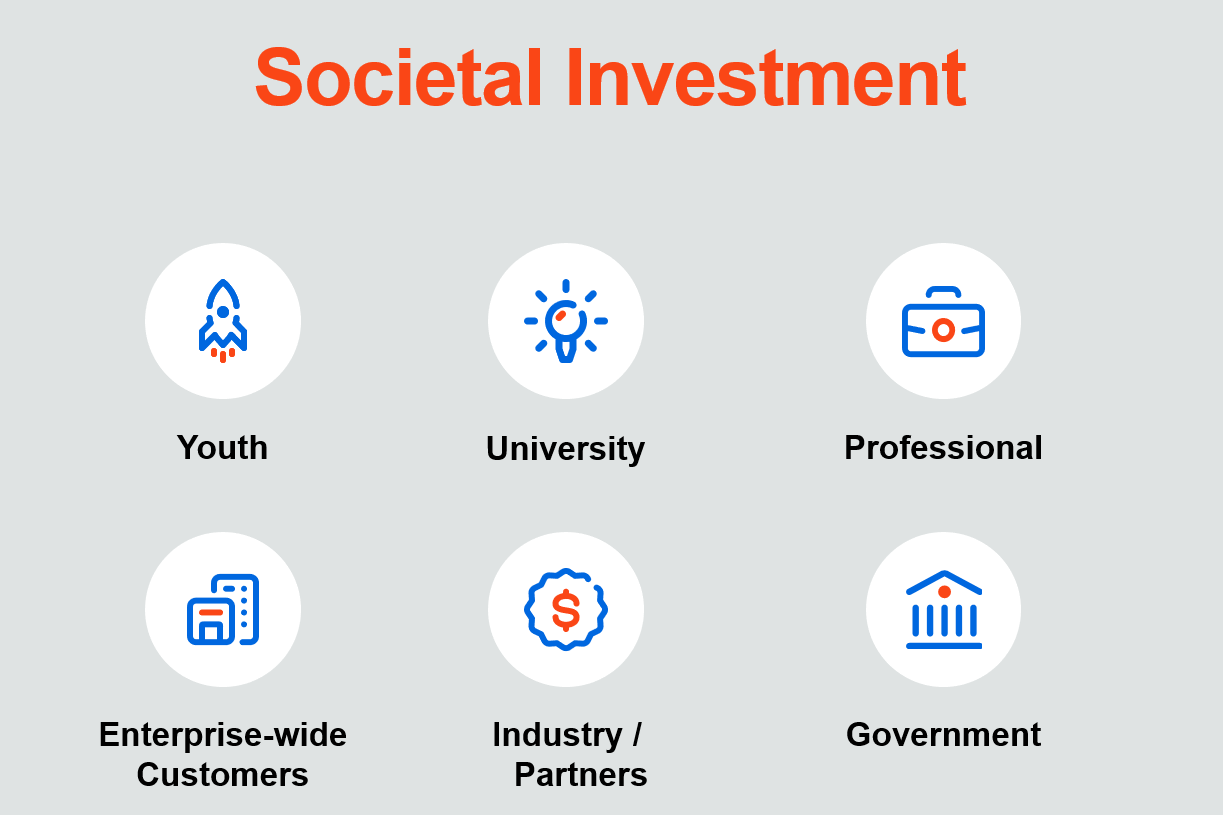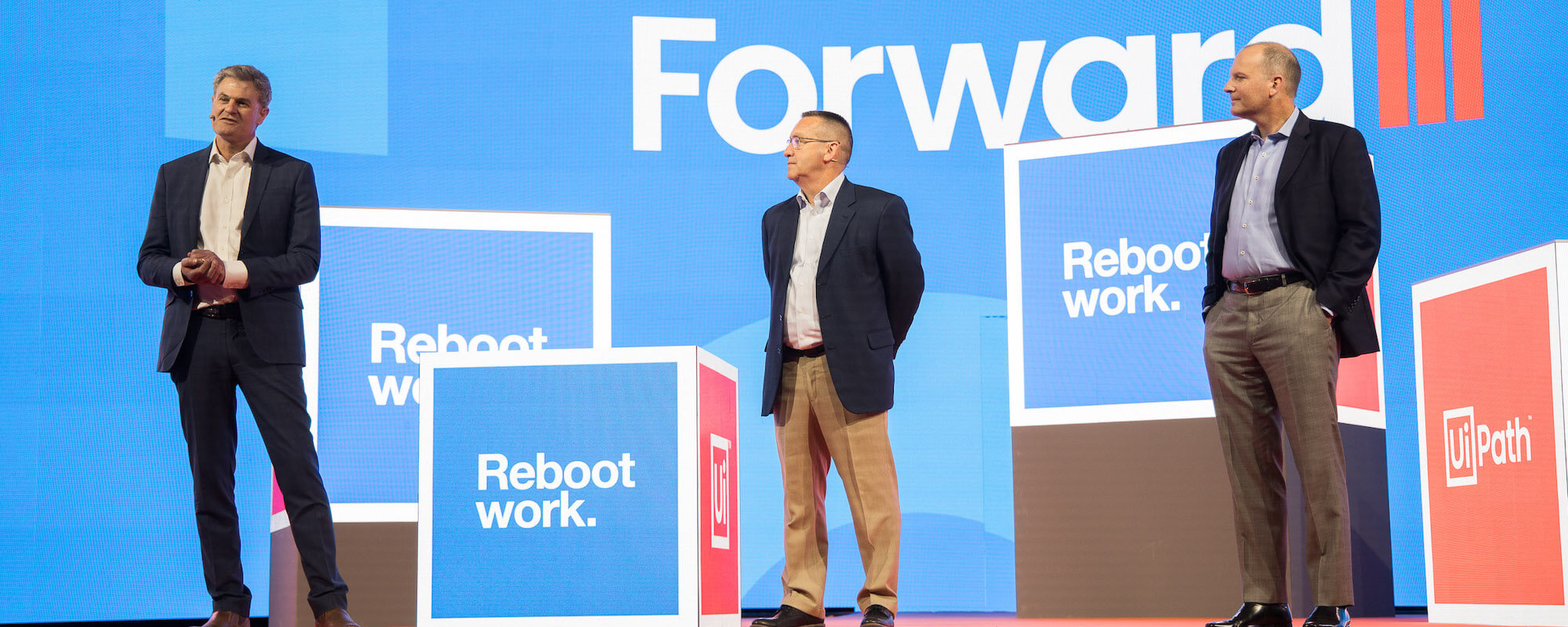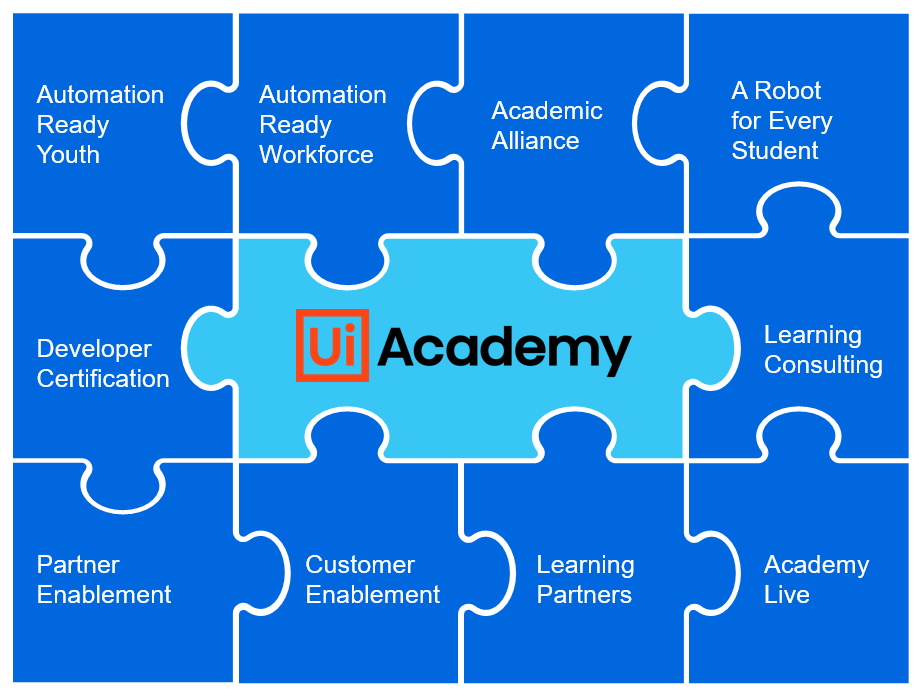How Schools are Enabling a Robot for Every Student

In the ‘automation first’ era, a robot for every person is the holy grail of industries around the world. This benchmark signifies the true, holistic integration of automation technology.
A software robot for every person is only possible if our workforce understands how to use automation technology. It’s currently estimated that there are more than 120 million workers who may need to be retrained to work alongside automation.
Robotic Process Automation (RPA) surprised many, including our up-and-coming workforce.
As technology evolves, so must the skill sets of the workforce that is working with these new tools. In the last decade, technology has changed quickly, and educational programs have struggled to keep pace.
Industry leaders like Google, Apple, and Microsoft have invested in the continued education of today’s students. Universities from the College of William & Mary in the United States (U.S.) and University of Auckland in New Zealand have invested in automation education, too.
As a result, the education technology market is expected to reach $21 billion by 2020.
The next step is to teach students some of the big skills, the kinds of things that are going to be useful for them in their everyday lives. First, as students and then in their lives when they leave this school and enter the workforce, either as entrepreneurs or in an organization.
— Kurt Carlson, associate dean for Faculty and Academic Affairs, Raymond A. Mason School of Business at the College of William & Mary
We’re making similar investments at UiPath. By 2022, we plan to educate two million people in RPA. We know that the vision of a robot for every person is possible only if we start with a robot for every student.

At our October 2019 FORWARD III conference in Las Vegas, Nevada, we talked with experts about the potential for automation education. We heard again and again that the path to a robot for every person begins with a robot for every student.
Why a vision for a robot for every person starts with one for every student
What does a robot for every person look like? A future where employees, managers, and company leaders work in harmony with automation technology.
Employees will use software robots on a personal level to make their day-to-day work more efficient. Companies will use the technology to streamline operations and deliver a better customer experience.
However, this is possible only if the people interacting with these technologies understand how to use them well. This kind of knowledge comes from a curriculum focused on automation skills. That’s why before there’s a robot for every person, we must work toward a robot for every student.

We believe every student across the globe should graduate knowing RPA.
In America alone, it’s estimated that there are approximately 56.6 million students in public and private school systems. That’s a lot of potential in one place—and a mind-blowing amount if we expand our vision to the youth of the world.
This potential shows us why we, as ethical tech leaders, must support global automation education. That includes training for students in hard-to-reach, impoverished communities. With the right educational framework, we can support the workforce of the future around the world.
What educational institutions and programs are doing to make this vision a reality

As global industry leaders invest in greater support and training in automation, a handful of cutting-edge universities and colleges have ventured into the automation education waters.
Automation education at the College of William & Mary

The Raymond A. Mason School of Business at the College of William & Mary, the second oldest university in America, is already demonstrating their ability to adapt and support career-ready skills for students.
Kurt Carlson, associate dean for Faculty and Academic Affairs, knew that to support students, the university needed to include automation education for all students.
We’re building a template that we believe can be adapted and leveraged across the entire university.
— Kurt Carlson, associate dean for Faculty and Academic Affairs, Raymond A. Mason School of Business at the College of William & Mary
Every undergraduate business student already has a robot on their computer. Carlson feels hopeful about the ability of students outside the business school to adapt to using software robots in the coming years.
And after every student at the university has mastered how to use RPA, William & Mary will turn their graduates loose to apply their skills across a myriad of industries.
Supporting the workforce of the future at the University of Auckland

The University of Auckland is a 45,000-person comprehensive university based in New Zealand. They've successfully trained students in medicine, law, business, economics, and more for over 100 years. In fact, they’ve done so well that the Times Higher Education ranked the University of Auckland as one of the most impactful universities in the world.
Matt Poole, strategic program manager at the University of Auckland, saw the positive potential of automation early on.
Poole led the university’s partnership with UiPath and PwC to develop a university-wide automation education program. After kicking off the automation course, Poole realized that it had powerful applications beyond the university’s curriculum.
We have to bring everyone with us, every demographic. So far, you can see that we’ve really still only touched a few. Yet, we’ve got to make sure that our whole nation is familiar with automation and AI [artificial intelligence].
— Matt Poole, strategic program manager, University of Auckland
Believing that automation skills can help impoverished youth escape the cycle of poverty, the university began reaching out to children in Auckland. They also began working with the Ministry of Social Development—the local body for social welfare and employment assistance—to set up digital embassies across New Zealand that can deliver remote automation training.
How UiPath and our partners support this vision
At FORWARD III, I shared some exciting developments in automation education. UiPath is determined to provide educational resources to support the workforce of the future.

At the heart of this effort is UiPath Academy. Two and a half years ago, we made the decision to democratize RPA learning and make our training free. We plan to continue down that path to make Academy accessible to anyone who wants to learn RPA. At the end of 2019, we’ve had more than 500,000 people enroll.
But we know we can’t do this alone.

We’re working with countries around the world to help coordinate automation education. The United States government hopes to teach automation skills to 750,000 Americans in the next five years. India hopes to train a combined 500,000, and France hopes to support an additional 100,000 people in their automation education.
We’ll continue to support our partners so they can educate the workforce of tomorrow without having to rely on us. We’re also dedicated to growing our Academic Alliance of global universities to support automation at the university level.
Want to learn more about what industry leaders around the world are doing to promote automation education? The FORWARD III event pack includes all the presentation recordings and slide decks, including our full session with the College of William & Mary and University of Auckland.

(Previously) SVP, Learning, UiPath
Get articles from automation experts in your inbox
SubscribeGet articles from automation experts in your inbox
Sign up today and we'll email you the newest articles every week.
Thank you for subscribing!
Thank you for subscribing! Each week, we'll send the best automation blog posts straight to your inbox.



